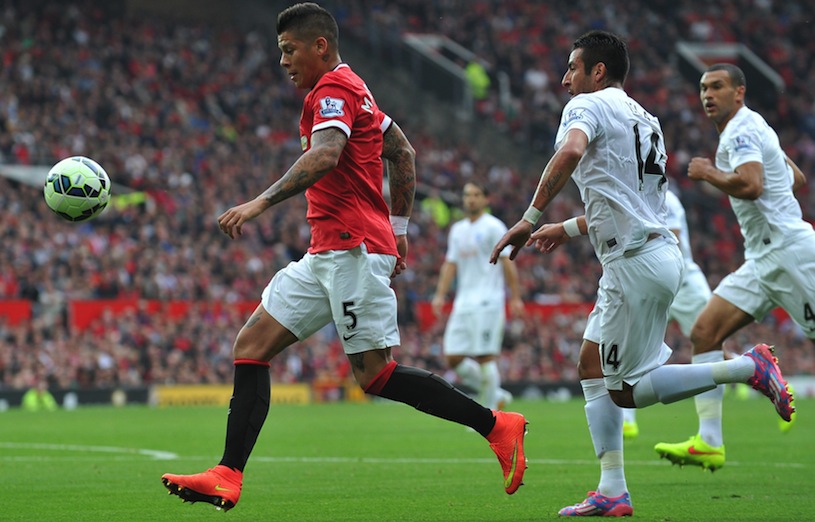When soccer’s top international tournament, the Champions League, begins its group stage on September 16, it will offer a chance for Europe’s top clubs to show off the results of their summer spending.
And quite a summer of spending it was: Teams in England’s Premier League spent €1.05 billion (about $1.4 billion) buying players, up from €752 million last year. In Spain’s La Liga, the teams paid €479 million. And in Italy and Germany, they spent €328 million and €315 million respectively.
Of course, European soccer operates like any international talent business, with top performers gravitating to the most generous employers.
“Transfer spending is analogous to the international balance of trade, where wealthy leagues usually import more talent than lower revenue domestic leagues,” says John Vrooman, a Vanderbilt University sports economist.
So it is no surprise that Premier League clubs spent the most, considering that its revenues hit €2.9 billion in the 2012-2013 season, compared to €2.0 billion and €1.9 billion for the German and Spanish leagues, according to Deloitte’s Annual Review of Football Finance.
But this summer’s spending also puts on display the vast differences in how European soccer leagues are organized. This is especially true when one compares England’s Premier League with Spain’s La Liga.
Since its founding in 1992, the Premier League has distributed television revenue fairly evenly. Currently, all international distribution revenues are spread evenly among the teams, as is half of the domestic TV income. The rest of the domestic income is paid out depending on performance and television appearances.
This relatively egalitarian distribution means that the difference in TV revenues among Premier League teams is low. During the season that ended in May, the top earner, Liverpool, received €122 million in TV revenues, 1.57 times what last place Cardiff City got (€77.7 million).
The Premier League’s equal payout system allows smaller English teams to buy players, which increases the league’s overall spending on talent.
“As they all have good incomes, the last team in the Premier League can participate in the transfer market,” says Plácido Rodríguez, president of the International Association of Sports Economists and an economics professor at Spain’s University of Oviedo.
Of course, the biggest English teams make and spend a lot more than the smaller ones. During the 2014 transfer window, Premier League buying was driven largely by the spending of four clubs owned or controlled by what Vrooman calls “sportsman” or “sugar-daddy” owners (i.e. Rich men who care more about winning than profit): Liverpool (€145.8 million), Chelsea (€111.3 million), Arsenal (€92.7 million) and the fourth richest team in Deloitte’s annual Football Money League ranking, Manchester United.
After a bad season that saw it miss out on the upcoming Champions League, Manchester United spent €182.5 million on transfers to improve its team.
“If a team feels it can make progress to qualify for Champions league, it makes an extra effort in transfer fees and salary,” says Rob Simmons, a professor of economics at the Lancaster University Management School who estimates Manchester United will lose at least €25 million by missing the competition this year.
Still, the egalitarian TV rights distribution has made the Premier League stronger overall.
“The financial advantage of the top English clubs is not as great as the financial advantage of the league as a whole,” says Stefan Szymanski, a sports management professor at the University of Michigan.
Compare that to Spain’s La Liga, a concentrated market dominated by Real Madrid and Barcelona, the two clubs with the highest revenues in the world, according to Deloitte.
Spanish teams negotiate TV rights separately, so the biggest chunk of the television revenues go to these top two teams, which each brought in over €180 million last year. According to Deloitte, the TV revenue ratio between the biggest and smallest earners in Spain is 7:1.
That’s far higher than in Italy (4.4:1) or Germany (2.5:1), not to mention England. In a market dominated by so few businesses, most teams can’t spend significant sums for players. During the summer player buying market, Barcelona, Real Madrid and Atlético de Madrid (a distant third in revenues) accounted for 81% of the €479 million Spanish teams spent.
There is reason to believe that the Premier League will hold on to its economic dominance its role as the biggest talent shopper. Because of a new €6.5 billion broadcast deal, Premier League teams took home €1.95 billion in TV fees in the season that ended in May, up 60% from €1.2 billion last year.
With this boom in broadcast rights, Deloitte estimates that Premier League teams brought in about €4 billion in revenues in the 2013-2014 season, or more than the Spanish and Italian leagues combined.
